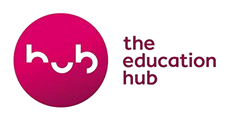enquiries@theeducationhub.co.nz
Postal Address
The Education Hub
110 Carlton Gore Road,
Newmarket,
Auckland 1023
enquiries@theeducationhub.org.nz
Postal Address
Donate
The Education Hub is a registered charity, making you eligible for a tax refund of up to a third of your donation.
New Zealand registered charity number: CC54471
© The Education Hub 2025 All rights reserved
Oops! We could not locate your form.
We value your privacy and are committed to protecting your personal information. The data you provide on this form will be used to keep you informed about our latest news, updates, and promotional offers. Rest assured, your information will be handled in strict accordance with the General Data Protection Regulation (GDPR). Your data will be stored securely, and you have the right to access, correct, or delete your information at any time. For more details, please review our Privacy Policy or Terms of Service.
